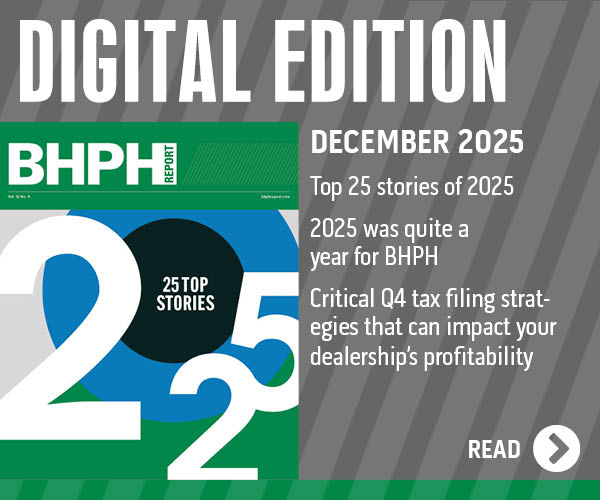NIADA sees bright future for members and organization as annual convention arrives

By subscribing, you agree to receive communications from Auto Remarketing and our partners in accordance with our Privacy Policy. We may share your information with select partners and sponsors who may contact you about their products and services. You may unsubscribe at any time.
ARLINGTON, Texas –
The exuberance in Steve Jordan’s voice is as apparent as a full-size truck that’s been enhanced with a lift kit, upgraded tires and sharp wheels. The chief executive officer of the National Independent Automobile Dealers Association emphasized his enthusiasm not only stems from the organization’s current state of affairs, but also the potential growth and success members could generate, too.
Once again ahead of NIADA’s annual national conference — which begins on June 17 in Las Vegas — Jordan shared updates on a variety of fronts.
BHPH Report: What’s your assessment of how the independent dealership world has behaved since the last NIADA conference? What significant developments immediately come to mind and why?
Steve Jordan: I think the dealer community has advanced pretty well since our last conference in the face of various opportunities and challenges in the market. We continue to see changes in technology, changes in consumer-buying behavior, regulatory enforcement and compliance, but I think those changes create opportunities, too. The two big developments that come to mind are No. 1, higher interest rates and No. 2, the escalation of new-car prices. This combination creates a unique opportunity for consumers to migrate to more affordable, used-car options. There are plenty of other developments, but those are the two that stand out.
BHPH: Much is being made about vehicle affordability. How much of a factor is that element in the independent dealership space?
Subscribe to Auto Remarketing to stay informed and stay ahead.
By subscribing, you agree to receive communications from Auto Remarketing and our partners in accordance with our Privacy Policy. We may share your information with select partners and sponsors who may contact you about their products and services. You may unsubscribe at any time.
SJ: I would say it’s a big factor when the average new-car price is closing in on $35,000 a unit. Coupled with the higher interest rates, monthly payments are just going to go up when you combine those two. Again, consumers are going to be looking for more affordable alternatives to new-car purchases. But the good news is we’re seeing a market with essentially full employment, and that’s creating consumer confidence. I think that’s fueling dealer optimism.
BHPH: What are NIADA members telling you as their most significant challenges to being successful and how are they navigating those challenges?
SJ: Generally, things are good, but they can always be a little bit better. The biggest challenge these days is with 100% certainty is just the higher costs of doing business. Higher interest rates, higher labor market, higher wages to attract and keep good employees; they’re all squeezing the profits out of typical small business operations. I find businesses that are efficient with their cash and place an emphasis on exceeding customer demands are going to be well positioned for a great year. I’m reminded of the old saying that price is irrelevant if the customer sees the value. Dealers who are creating value in their products, processes and people are the ones who are going to winning over customers.
BHPH: With another year of interaction in the books, how is NIADA’s presence on Capitol Hill continuing to strengthen along with relationships with lawmakers?
SJ: NIADA’s presence on Capitol Hill is strong and represents another front where NIADA is definitely winning for its members. This year we’ve been active a lot in meeting with the new House and Senate leadership as well as the committees of jurisdiction over our industry. Now that Democrats control the House, the deck got shuffled a little bit. We had to facilitate a change. Through the NIADA PAC Fund, we continue to support members who support the used-vehicle industry on both side of the aisle. And we also continue to explore ways to creatively engage key Congressional members. For example, the last weekend in April, we held a business roundtable discussion here in Dallas with about 40 dealers and association leaders with Congressman Patrick McHenry of North Carolina, who is the ranking member of the House Financial Services Committee. Any time there is an opportunity to continue to build those relationships and tell the NIADA story, we’re right on top of it.
BHPH: What is your evaluation of how healthy state-level independent dealerships associations are?
SJ: We’ve got some great state associations, but we definitely have some work to do in some other states. As you may recall, we hired Paul John, the former executive director of the Georgia IADA, to run our national field operations. Since bringing him on, he’s focused a lot of his attention on working closely with some of our key states like Michigan, Illinois, Tennessee and some others by leveraging technology and membership marketing opportunities. We’re seeing some immediate results in membership and confidence.
The other thing that’s interesting is we’re definitely seeing a surge in interest from the dealer community to help out at the state level. It seems like every time I go somewhere, I have a conversation with somebody who is asking about what they can do to help more at the state level. That’s really encouraging. At the end of the day, growing, retaining and serving our members is definitely a marathon, not a sprint. We’re committed to doing the work we need to do to support our members and our state associations as best we can. We definitely have some work to do.
BHPH: After a period of expansion with the acquisitions of the Leedom Group and the National Alliance of Buy-Here, Pay-Here Dealers, how confident are you that NIADA is hitting its stride and poised for a bright future?
SJ: I’m super excited about the momentum NIADA has moving forward. We’re investing in staff and technology as well as infrastructure to support the growth that we’ve seen since acquiring Leedom and NABD operations. The original idea behind these integrations was to bring industry a little closer together under the NIADA banner and support dealers in ways NIADA had not previously offered. I would say the early returns are very strong. We’re seeing a groundswell of support from dealers and a growing confidence in NIADA to give our dealers what they are looking for from a support perspective. The other thing that’s really encouraging is we’re about at the same point we were financially from a cash perspective when we acquired Leedom in the first place. Just three years later, it’s very encouraging from a financial perspective. Ultimately, despite the current market ups and downs that are normal, I still believe it’s a great time to be in the car business and a member of NIADA.


